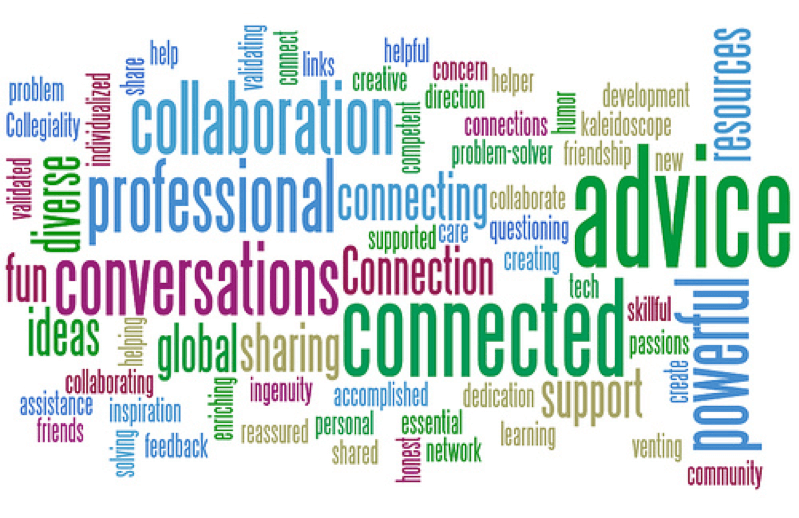Connected Educator Chapter Six
Throughout the pages from Chapter 6, it clearly guides readers through the steps of implementing a connected learning community. The chapter opens up with a story illustrating how the author and others experience the concepts of what is being discussed within the chapter. With this, I think it is significant because it catches the audience's attention and makes them feel obligated to learn more.
To start off, the chapter talks about how "personal learning networks help you leverage deeper connections and relationships, and from those networked relationships, you grow a community of connected learners and leaders" (Nussbaum-Beach and Hall). I think this is an important piece of information that everyone with a profession should take into consideration. I want to become a music journalist so I think that professional growth is definitely deeper and more profound and with that, I am capable of changes that can come my way. I know throughout the process of my future career, I am going to set goals for myself and make sure I use techniques to benefit myself and get the networking that I need in order to be successful.
I know that in order for me to accomplish and learn from my personal learning network, I need to attract the right people and organize the relevant content. Being a music journalist, I think that this is crucially important because I would want my audience to be interested in what I am writing about and the section titled "Starting Your Personal Learning Network" does not fail to tell me how. This section talks about the different tools I can use like blogs, Twitter, Evernote, and so much more in order for me to feel comfortable with what I should be using. Blogs, Twitter, and Evernote are important tools I could use for my platform on becoming a music journalist. For example, I can write blogs based on my experiences of going to music festivals and concerts; I can use Twitter to stay up to date on what is happening in the music industry; I can use Evernote to take notes about the different interviews I can have with upcoming music artists.
Chapter 6 proceeds to go into detail about how professional development in today's time is based on an individual's needs, interests, and passions. With these three things, it can produce learners who share, apply, and synthesize what they learn in order to improve and to have a healthy community. This includes: shared history and culture, active and consistent participation, clear purpose, sense of ownership, etc. The chapter also mentions that connected learners find that problem solving and reflecting, building capacity for change, and influencing policy in community is important because it is not just about interests; it is also by practice. When the authors talked about healthy communities, I thought that was really important. For example, "In healthy communities, participants discover how to leverage members' collective intelligence" (Nussbaum-Beach and Hall). I realized that it is important to understand what each member knows and starts to generalize much of the explicit and tacit knowledge mentoring experiences or changed classroom practice. This includes your intrusive thoughts from who you know to who you know and who you know to what who you know knows. I think that the value of this is to understand how to get into what is being talked about and leverage others' knowledge and experience once you realize what fellow community members know.
In the section titled "Roles and Responsibilities", the authors talk about David Lee and the roles that community members self-selected. These included: linking, lurking, learning, and leading. In order to be an efficient and effective connected learning community member, it is significant to make sure learning and leading is a goal to draw linking and lurking participants into action. After this, the authors also include some useful tips to use as guideposts to help build and evolve connected learning communities. Going back to me becoming a music journalist, I think that focusing on the people instead of the tools in my networks and communities is important. Along those lines, I would also like to add that the interactions with them definitely play out in an online community. Designing my community with an intense passion and serious commitment, which would be music and writing, is important because I would want to see what really happens instead of looking at the expectation side of things. What I mean by this is that I would need to revisit ideas and challenge myself to see if what I am doing is the right thing. I would need to learn to balance time and priorities while adding to other things that connected learning brings.
Citation: Nussbaum-Beach, Sheryl, and Lani Ritter Hall. The Connected Educator: Learning and Leading in a Digital Age. Solution Tree Press, 2012.

Comments
Post a Comment